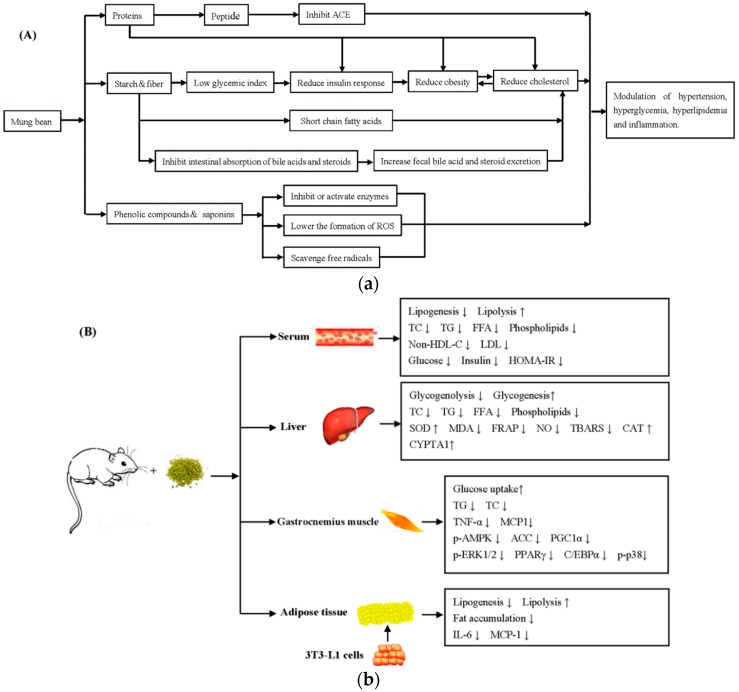Figure 2.
(A) Modulation of hypertension, hyperglycemia, and hyperlipidemia and inflammation by the mung bean (including seeds, sprouts, and seed coats) or its active components. (B) Schematic diagram depicting the beneficial effects of the mung bean (including seeds, sprouts, and seed coats) or its active components on metabolic responses. The mung bean or its active compounds prevented an increase in serum glucose and lipid concentrations by inhibiting the activities of the related enzymes in a carbohydrate and lipid metabolism, increasing lipolysis in the liver and adipose tissue and decreasing oxidative stress in white adipose tissue, also increasing capacity of energy metabolism in the gastrocnemius muscle. In addition, the expression levels of inflammation-related genes in the liver, muscle, and adipose tissue were inhibited. The mung bean protein was hydrolyzed into peptides with small molecular weight to reduce the blood pressure. ↑ and ↓ sign, after the mung bean or the supplementation of its active compounds, represented an increase and decrease, respectively. (Original).

